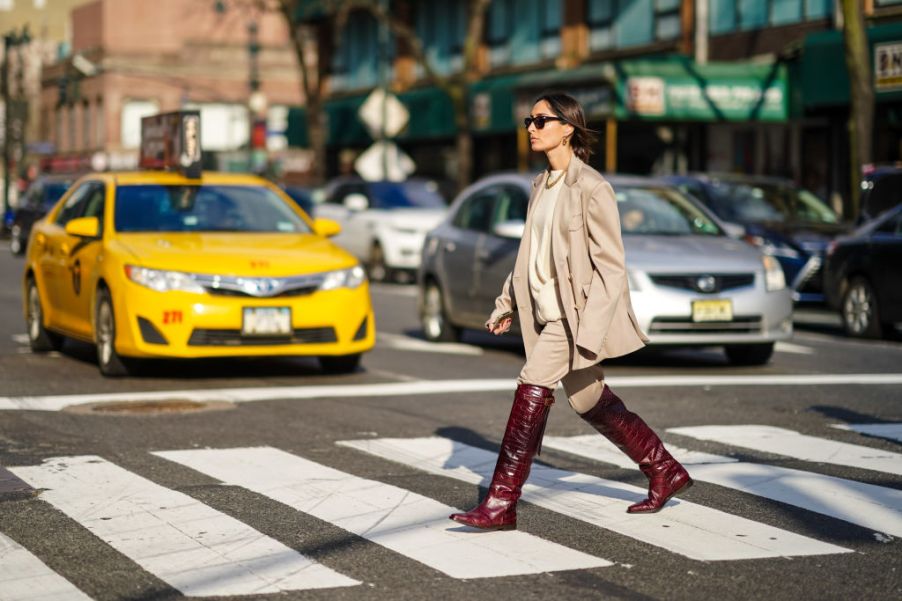
2019 Was the Worst Year for Pedestrian Deaths in Decades
Growing numbers of pedestrian fatalities are capturing the attention of many across the country. Concerns have grown enough that programs like Vision Zero, aimed at developing solutions to reduce pedestrian deaths, are being adopted far and wide. Many areas are giving serious thought to the coexistence of cars and people on our streets and highways.
How much have pedestrian fatalities increased over the years? What can be done to greatly diminish that number?
Pedestrian fatality statistics
Data estimates on pedestrian deaths in 2019 from the Governors Highway Safety Association (GHSA) illustrated that the number of fatalities continues to rise each year. There were 6,590 pedestrian fatalities in 2019, a 5 percent increase from 2018 according to the GHSA data. The number of estimated pedestrian deaths in 2019 is the highest number since 1988.
Looking at the big picture, that means 2 deaths for every 100,000 people, the highest ratio since 1997. The data reported is to the end of June 2019.
No predictions are made by the GHSA for state-by-state data. That being said, the data shows increases at the state level in pedestrian deaths through the first half of 2019. When compared to the first half of 2018, it’s revealed that five states made up 47 percent of pedestrian fatalities. It’s also noted that Arizona, California, Florida, Georgia, and Texas only account for 33 percent of the U.S. population.
Florida, Hawaii, and New Mexico, until June 2019, had the three highest death rates per 100,000 people. Idaho, Vermont, and Wisconsin had the lowest fatality rates.
The increase over the last decade has been significant. Each year since 2009 shows an increase in pedestrian deaths. In 2009, the number of pedestrian deaths sat at 4,109. When looking at numbers up to 2018, the latest year we have complete data for, a 53 percent increase in pedestrian death is shown. If the estimated 6,590 deaths calculated by the GHSA is correct, there’s been a 60 percent increase from 2009 through December 31, 2019.
A traffic increase in 2019
One reason for the increase could be attributed to an increase in motor vehicle travel. According to the Federal Highway Administration, such travel increased 0.8 percent in the first half of 2019 over the same time frame in 2018.
The group points out a number of other contributing factors to the increase in pedestrian death. One factor is the current popularity of SUVs and light trucks. The weather is also warmer, and people are out on foot more when conditions are warm and favorable. There’s also a significant increase in smartphone use while driving even though it’s illegal to do so in many places.
In 2009, the study points out that 48 percent of new vehicles sold were SUVs and light trucks. By 2018, that number jumped to 69 percent of all vehicles sold. It was also noted that those walking who were struck by SUVs were twice as likely to die as those a car hit.
Interestingly, other traffic death totals held steady and increased a mere 2 percent over the last 10 years. It’s likely that the increase in vehicular safety measures helped to keep these numbers down. The number of fatalities in passenger-vehicles in 2018 was a full 25 percent lower than in 1975.
Complete numbers for 2019 will be released by the National Highway Traffic Safety Administration (NHTSA) later in the year.
Keeping pedestrians safe
The Vision Zero Network works under the approach that pedestrian deaths are preventable. They help communities implement practical measures to help reduce the number of pedestrian fatalities in a variety of ways.
Bringing together a diverse group of community stakeholders, including local authorities, policymakers, public health officials, transportation professionals, and concerned citizens, they work to establish accountability, collaboration, and leadership initiatives. They also work to collect vital data on pedestrian death in a given location so they can pinpoint, understand, and eliminate identifiable risks.
They also work with communities to manage safe speed levels, promote community engagement, and ensure transparency in all processes. They help municipalities to set goals for achieving zero traffic deaths and injuries.
Through the efforts of such groups, the hope is that the number of pedestrian fatalities can be reduced greatly in a short period of time.


